 This week's federal court decision to strike down Wisconsin's polling place Photo ID law has national significance and does not bode well for Republicans who have been attempting to advance such electoral schemes in recent years, as based on misleading "facts", wild claims and dishonest interpretations of case law and court precedent.
This week's federal court decision to strike down Wisconsin's polling place Photo ID law has national significance and does not bode well for Republicans who have been attempting to advance such electoral schemes in recent years, as based on misleading "facts", wild claims and dishonest interpretations of case law and court precedent.
The court's landmark decision in the Wisconsin case contains a methodology for testing the law's constitutionality that, if applied by other courts in similar federal challenges to similar laws in other states, would likely mark the beginning of the end for Republican-enacted, polling place Photo ID restrictions. We describe that possibility as "likely", given that a careful reading of prior case law suggests that six of the Supreme Court's nine Justices have already subscribed to legal opinions that are consistent with the methodology used by the federal court in Wisconsin.
In late 2011, shortly after the filing of the first of the two federal cases that resulted in this week's ruling finding that Wisconsin's polling place Photo ID law (Act 23) violated both the U.S. Constitution and Section 2 of the Voting Rights Act (VRA), The BRAD BLOG explained why the issues before the federal bench in Wisconsin "could reverse similar laws nationwide."
The 90-page decision and order [PDF] that U.S. District Court Judge Lynn Adelman meticulously crafted, not only after a full trial on the merits, but over a span of more than 3 1/2 months following it, suggests that our earlier prediction may have been an understatement.
In declaring Wisconsin's Republican-enacted Photo ID law unconstitutional and a violation of federal law, Judge Adelman applied a very specific test for the law, one called for by the U.S. Supreme Court back in 2008. That same test, measuring the potential benefits of such laws against their possible harm to voters' rights, if similarly applied elsewhere, would likely invalidate most, if not all of the similar restrictions which have been rammed through numerous GOP-majority state legislatures over the past six years.
While stopping short of describing Republican "justifications" for such laws as a mere pretext for voter suppression, Judge Adelman's decision persuasively finds that the core GOP claims about the supposed need for polling place Photo ID restrictions cannot withstand judicial scrutiny when tested against a fact-based reality in a court of law. The judge found, in no uncertain terms, that such laws are constitutionally infirm because, without legitimate state interests for such restrictions, they serve only to disproportionately disenfranchise the poor, the elderly and minority voters...
Consistent with Crawford
In 2006, Indiana Republicans enacted the first such polling place Photo ID law in the nation. That case made it all the way to the U.S. Supreme Court in Crawford vs. Marion County Elections Board (2008), before it was allowed to be enforced by the state.
The Court's ruling in the case, however, was far different from how Republican defenders of such laws have portrayed it ever since, including Texas Attorney General (and Gubernatorial candidate) Greg Abbot, who falsely claimed last year, in response to the U.S. Dept. of Justice's lawsuit against his state's similar law, that "The U.S. Supreme Court has already ruled that voter ID laws do not suppress legal votes." In fact, the Court did no such thing.
As this site, and numerous others, have repeatedly noted, Crawford involved the allegation that Indiana's first-in-the-nation Photo ID voting restriction was unconstitutional "on its face." Six of the U.S. Supreme Court's nine Justices rejected that facial challenge, but they decidedly did not, as Abbot incorrectly declared, find that "voter ID laws do not suppress legal votes."
What they did do, however, is establish the test that must be applied to such laws in determining their constitutionality. At the core of his decision in the Wisconsin case, Judge Adelman applied that test with careful measure.
As Judge Adelman observed, Crawford lacked a "majority opinion" --- that is an opinion in which five Justices agreed on the reasons for the decision. Instead, there were four separate opinions: a lead opinion written by Justice John Paul Stevens (joined by Chief Justice Roberts and Justice Kennedy), a concurring opinion written by Justice Antonin Scalia (joined by Justices Thomas and Alito), a dissenting opinion written by Justice David Souter (joined by Justice Ginsburg) and a separate dissent by Justice Breyer.
While the various Justices agreed and disagreed on a number of points throughout those opinions, Judge Adelman notes that six of the nine Justices each concurred that the correct approach is to apply what he describes as the Anderson/Burdick test, which requires the courts, on a case-by-case basis, to measure a law's potential damage to voters' right to vote, against the specific claims made by the state as to why such additional burdens and restrictions are necessary.
"Even very slight burdens," he wrote, "'must be justified by relevant and legitimate state interests 'sufficiently weighty to justify the limitation.'"
In fact, all nine Justices in Crawford agreed that the Anderson/Burdick balancing test applied in the case. The difference between the dissenting opinions and the lead opinion written by Justice Stevens is based exclusively on their respective views on the status of the actual evidence on record before the Court.
In his dissent, Justice Souter opined that the Hoosier State's polling place Photo ID law "threatens to impose nontrivial burdens on the voting right of tens of thousands of the State's citizens...and a significant percentage of those individuals are likely to be deterred from voting."
In comments to The BRAD BLOG last October, Bill Groth, attorney for the lead plaintiff in the Crawford case, insisted that he had, in fact, presented an adequate record of undue burden on voters in the case. Justice Stevens, however, didn't see it that way. In his lead opinion, the now-retired Justice observed that "the evidence in the record does not provide us with the number of registered voters without photo identification." He found there was no "concrete evidence of the burden imposed on voters who currently lack photo identification" and reasoned that, based upon the record before the Court, they [emphasis added] "cannot conclude that the statute imposes 'excessively burdensome requirements' on any class of voters."
The Court did not find that Indiana's law imposed no burden on voters, as Abbott in Texas, and Republicans elsewhere have attempted to claim, but rather, such evidence had simply not been presented to the Court in that case.
In October 2013, after Circuit Court Judge Richard Posner, during a book-tour interview, essentially recanted his original majority opinion in the Crawford case --- the one that eventually landed before the Supreme Court. Posner admitted he'd gotten it wrong. Justice Stevens, who retired in 2010, was then asked about his own lead opinion in the case, and told the Wall Street Journal, that he "always thought that [dissenter] David Souter got the thing correct, but my own problem with the case was that I didn't think the record [before the Court at the time] supported everything he said in his opinion."
Crawford, Stevens insists, "is state-specific and record-specific." Meaning, the Court's ruling was based on, and applied only to Indiana's version of the law, how it was implemented there, how it affected voters in that particular state, and what information on all of the above was available in the record before the court at the time.
While all nine Justices agree that the Anderson/Burdick test applies, Judge Adelman observed that there is a division over the manner in which that test must be applied. Justice Scalia, in his Crawford concurring opinion, asserted that a law could be evaluated only on the basis of its "reasonably foreseeable effect on voters generally." By contrast, Judge Adelman writes, "Justice Stevens seemed to assume that a law could be invalid based on its effect on a subgroup of voters."
Because it did not reflect the position of a majority of the Supreme Court, Justice Scalia's position was not legally binding in the Wisconsin Photo ID case. Judge Adelman applied Stevens' position on the "manner" in which the Anderson/Burdick test should be applied --- a position that not only appears to be shared by six of the nine Justices who took part in the Crawford case, but by the Supreme Court's Anderson and Burdick decisions, which establish that "an unjustified burden on some voters will be enough to invalidate a law."
Based upon his analysis as to "how" the Anderson/Burdick test is to be applied, Judge Adelman concluded that "a law like Act 23 is invalid if it imposes burdens on a subgroup of a state's voting population that are not outweighed by the state's justifications for the law."
While the immediate impact of this "manner" of applying Anderson/Burdick was an order permanently enjoining enforcement of Wisconsin's Photo ID law, the likelihood that Judge Adelman had applied the law in the correct "manner" provides the reason why this case could well mark the beginning of the end for polling place Photo ID laws in other states.
'Justifications' for Photo ID Law Demolished
In defending the law, Wisconsin Republicans advanced four justifications for the Photo ID restriction: "(1) detecting and preventing in-person voter-impersonation fraud; (2) promoting public confidence in the integrity of the electoral process; (3) detecting and deterring 'other types of voter fraud;' and 4) promoting orderly election administration and accurate recordkeeping."
The first of those, according to Judge Adelman, was little more than a phantom menace. He who found that "The evidence at trial established that virtually no voter impersonation occurs in Wisconsin. ... The defendants [e.g. Republican Governor Scott Walker] could not point to a single instance of known voter impersonation occurring in Wisconsin at any time in the recent past." They did identify a single case of "voter impersonation," but that case, the court observed, involved absentee-ballot fraud by "a man who applied for and cast his deceased wife's absentee ballot."
That instance of fraud was unlikely to have been prevented by Wisconsin's polling place Photo ID restrictions because the man "could have easily circumvented" the law by mailing a copy of his deceased wife's Photo ID together with the fraudulent "request for an absentee ballot."
Although the lack of in-person voter-impersonation fraud placed on record in Wisconsin was specific to that state, the same point might also be applied in federal challenges against similar Republican laws in other states, such as in Texas and in North Carolina, where the U.S. Dept. of Justice has filed federal lawsuits seeking to block GOP-enacted polling place Photo ID restrictions. According to sworn congressional testimony by Loyola Law Prof. Justin Levitt in September of 2011, for instance, there had been just nine (9) potential cases of in-person impersonation --- the only type of fraud that can possibly be deterred by such laws --- on record, out of more than 400 million votes cast at the polls nationwide between 2000 and the time of his testimony before a Senate sub-committee a decade later.
In 2012, a non-partisan news consortium confirmed Levitt's findings when they were able to document just ten (10) such cases over the past decade, based on the examination of the election fraud cases filed in all 50 states since 2000.
In his decision, Judge Adelman set forth an explanation as to why cases of in-person voter fraud are so rare, echoing the case made in "The Truth About Voter Fraud," a 2007 study published by the non-partisan Brennan Center for Justice at NYU Law School:
To commit voter impersonation fraud, a person would need to know the name of another person who is registered at a particular polling place, know the address of that person, know that the person has not yet voted, and also know that no one at the polls will realize that the impersonator is not the individual being impersonated.
Judge Adelman's decision reveals that once that first justification, prevention of in-person voter fraud, is demolished, the state's remaining three justifications quickly crumble. Rather than promoting public confidence in elections, polling place Photo ID laws serve to "undermine" public confidence because they falsely imply the existence of a voter fraud problem that does not exist. Because Photo ID has the impact of "disenfranchising voters and making it harder to vote," such laws undermine the public's belief that election results reflect "the will of the people."
The "orderly election administration" argument crumbled because, as the judge observed, the defendants "have not identified any way in which [Photo ID] serves this interest that is distinct from the state's interest in detecting and preventing voter fraud." Wisconsin Republicans also failed to provide any evidence that would support their claim that their polling place Photo ID restrictions would prevent other forms of voter fraud, such as voting by felons, whose right to obtain a valid driver's license is not barred by past convictions.
Unreasonable Burdens
Where the lead opinion in Crawford noted that the record before the Court at the time failed to establish the number of eligible Indiana voters who lacked the law's requisite Photo ID, Judge Adelson expressly found that "approximately 300,000 registered voters in Wisconsin, roughly 9% of all registered voters, lack a qualifying ID." Those numbers alone, he noted, were far more than the number of votes which determined the results of Wisconsin's 2010 contests for Governor and U.S. Senate. In addition, he added, there are also "a number of persons who are eligible to vote but not yet registered who lack the requisite ID"
Judge Adelman found that the Photo ID statute imposes little or no burden upon those who already possess the requisite Photo ID, but impose significant burdens on those who do not --- burdens that are especially significant for the poor and which have a disparate impact on a disproportionate number of African-American and Hispanic voters, whose poverty and educational deficits are, themselves, the product of past discrimination.
The burdens not only entail the expense of obtaining requisite documents, such as birth certificates, in order to obtain a Photo ID (see our 2011 coverage of this case highlighting the difficulties of then 84-year old lead plaintiff, Ruthelle Frank and the difficult she had obtaining and affording the needed documentation), but the poor having to take time off from work not only to travel to a DMV (without access to a drivers license) and to travel to agencies from which the prerequisite documents are sought. Moreover, the record revealed that the poor had to traverse extraordinarily complex legal hoops in their quest to obtain an acceptable form of Photo ID --- a circumstance that made it all the more burdensome because of inferior levels of education and language problems encountered due to a lack of bilingual assistance at many Wisconsin DMV offices.
While, as it pertained to Wisconsin, Judge Adelman found that the burdens on the right to vote clearly outweighed the superficial state justifications, it is important to note that in many states, the burdens imposed on voters by such laws are far greater than those in Wisconsin. For example, last year, a unanimous three-judge U.S. District Court panel found that a Texas Photo ID restriction law imposed an "especially daunting" burden upon "the working poor", some of whom would have to travel 200-250 miles round trip to the nearest Department of Public Safety to obtain the requisite Photo ID. That court observed that a "law that forces poorer citizens to choose between their wages and their franchise denies or abridges their right to vote."
Thus, one can see that if analyses similar to Judge Adelman's in Wisconsin --- as directed by the U.S. Supreme Court's previous ruling --- are applied elsewhere, it could, very well, mark the beginning of the end of the spate of voter disenfranchising GOP Photo ID laws.
UPDATED 5/14/14: Republican Governor Scott Walker and the other named defendants have filed a formal Notice [PDF] that they intend to appeal Judge Adelman's decision to the 7th Circuit Court of Appeals.


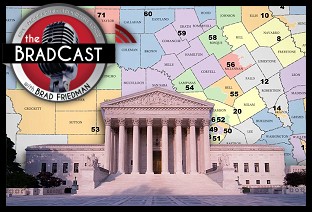 SCOTUS Ruling a How-To for Unlawful Gerrymandering on 'Eve' of Critical Election Year: BradCast' 12/17/25
SCOTUS Ruling a How-To for Unlawful Gerrymandering on 'Eve' of Critical Election Year: BradCast' 12/17/25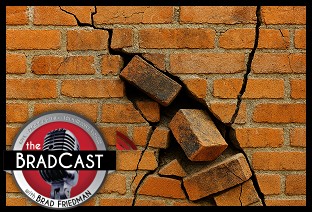 Bricks in the Wall:
Bricks in the Wall: 'Green News Report' 12/16/25
'Green News Report' 12/16/25
 'This One Goes to 11': Weekend of Violence, Tragic Murder of Rob Reiner: 'BradCast' 12/15
'This One Goes to 11': Weekend of Violence, Tragic Murder of Rob Reiner: 'BradCast' 12/15 Sunday 'WTF?' Toons
Sunday 'WTF?' Toons Trump Now Losing One
Trump Now Losing One 'Green News Report' 12/11/25
'Green News Report' 12/11/25 Dems Continue Stunning 2025 Election Streak: 'BradCast' 12/10/25
Dems Continue Stunning 2025 Election Streak: 'BradCast' 12/10/25 Petrostates and Propagandists Undermining Climate Science: 'BradCast' 12/9/25
Petrostates and Propagandists Undermining Climate Science: 'BradCast' 12/9/25 'Green News Report' 12/9/25
'Green News Report' 12/9/25 The High Cost of Trump's Terrible Policy Making: 'BradCast' 12/8/25
The High Cost of Trump's Terrible Policy Making: 'BradCast' 12/8/25 Sunday 'All in a Day's Work' Toons
Sunday 'All in a Day's Work' Toons Dems Fight to Avoid the GOP's Massive, Year-End Health Care Cliff: 'BradCast' 12/4/25
Dems Fight to Avoid the GOP's Massive, Year-End Health Care Cliff: 'BradCast' 12/4/25 'Green News Report' 12/4/25
'Green News Report' 12/4/25 A 'Flashing Red Warning Sign' for GOP: 'BradCast' 12/3/25
A 'Flashing Red Warning Sign' for GOP: 'BradCast' 12/3/25 Hegseth, War Crimes and DoD's 'Politicization Death Spiral': 'BradCast' 12/2/25
Hegseth, War Crimes and DoD's 'Politicization Death Spiral': 'BradCast' 12/2/25 Follow the
Follow the 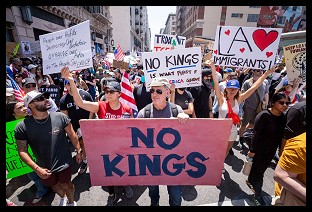 With Thanks, No Kings and Good Cheer
With Thanks, No Kings and Good Cheer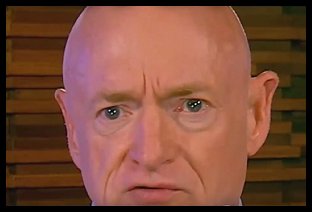 Presidential Illegality and Duty to Disobey
Presidential Illegality and Duty to Disobey President of United States Calls for Killing Democratic Officials: 'BradCast' 11/20/25
President of United States Calls for Killing Democratic Officials: 'BradCast' 11/20/25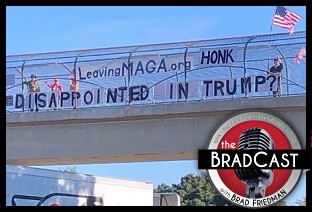 Is MAGA Finally Beginning to Fall Apart?: 'BradCast' 11/19/25
Is MAGA Finally Beginning to Fall Apart?: 'BradCast' 11/19/25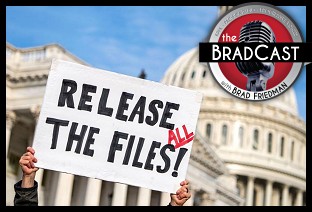 Trump's Terrible, Horrible, No Good, Very Bad Week: 'BradCast' 11/18/25
Trump's Terrible, Horrible, No Good, Very Bad Week: 'BradCast' 11/18/25
 VA GOP VOTER REG FRAUDSTER OFF HOOK
VA GOP VOTER REG FRAUDSTER OFF HOOK Criminal GOP Voter Registration Fraud Probe Expanding in VA
Criminal GOP Voter Registration Fraud Probe Expanding in VA DOJ PROBE SOUGHT AFTER VA ARREST
DOJ PROBE SOUGHT AFTER VA ARREST Arrest in VA: GOP Voter Reg Scandal Widens
Arrest in VA: GOP Voter Reg Scandal Widens ALL TOGETHER: ROVE, SPROUL, KOCHS, RNC
ALL TOGETHER: ROVE, SPROUL, KOCHS, RNC LATimes: RNC's 'Fired' Sproul Working for Repubs in 'as Many as 30 States'
LATimes: RNC's 'Fired' Sproul Working for Repubs in 'as Many as 30 States' 'Fired' Sproul Group 'Cloned', Still Working for Republicans in At Least 10 States
'Fired' Sproul Group 'Cloned', Still Working for Republicans in At Least 10 States FINALLY: FOX ON GOP REG FRAUD SCANDAL
FINALLY: FOX ON GOP REG FRAUD SCANDAL COLORADO FOLLOWS FLORIDA WITH GOP CRIMINAL INVESTIGATION
COLORADO FOLLOWS FLORIDA WITH GOP CRIMINAL INVESTIGATION CRIMINAL PROBE LAUNCHED INTO GOP VOTER REGISTRATION FRAUD SCANDAL IN FL
CRIMINAL PROBE LAUNCHED INTO GOP VOTER REGISTRATION FRAUD SCANDAL IN FL Brad Breaks PA Photo ID & GOP Registration Fraud Scandal News on Hartmann TV
Brad Breaks PA Photo ID & GOP Registration Fraud Scandal News on Hartmann TV  CAUGHT ON TAPE: COORDINATED NATIONWIDE GOP VOTER REG SCAM
CAUGHT ON TAPE: COORDINATED NATIONWIDE GOP VOTER REG SCAM CRIMINAL ELECTION FRAUD COMPLAINT FILED AGAINST GOP 'FRAUD' FIRM
CRIMINAL ELECTION FRAUD COMPLAINT FILED AGAINST GOP 'FRAUD' FIRM RICK SCOTT GETS ROLLED IN GOP REGISTRATION FRAUD SCANDAL
RICK SCOTT GETS ROLLED IN GOP REGISTRATION FRAUD SCANDAL VIDEO: Brad Breaks GOP Reg Fraud Scandal on Hartmann TV
VIDEO: Brad Breaks GOP Reg Fraud Scandal on Hartmann TV RNC FIRES NATIONAL VOTER REGISTRATION FIRM FOR FRAUD
RNC FIRES NATIONAL VOTER REGISTRATION FIRM FOR FRAUD EXCLUSIVE: Intvw w/ FL Official Who First Discovered GOP Reg Fraud
EXCLUSIVE: Intvw w/ FL Official Who First Discovered GOP Reg Fraud GOP REGISTRATION FRAUD FOUND IN FL
GOP REGISTRATION FRAUD FOUND IN FL

































